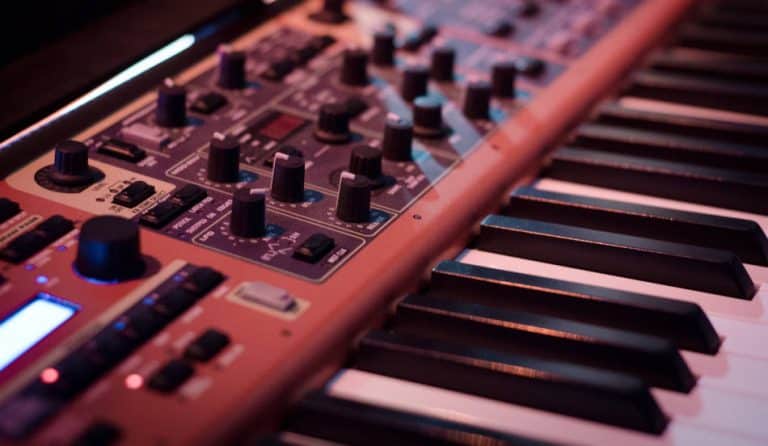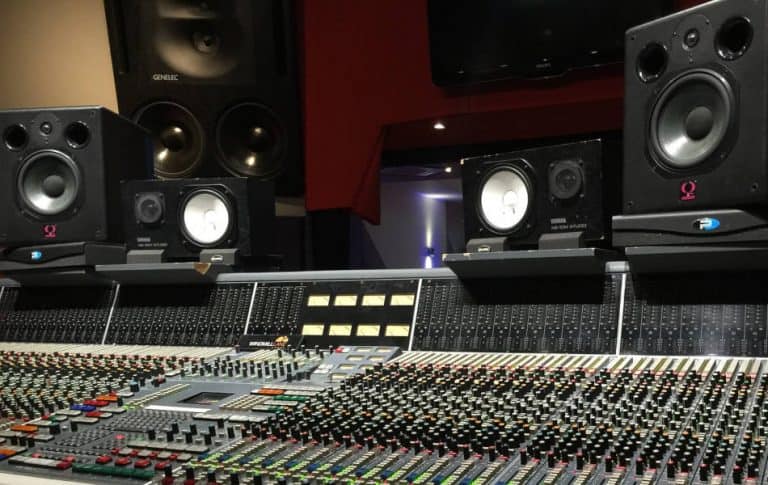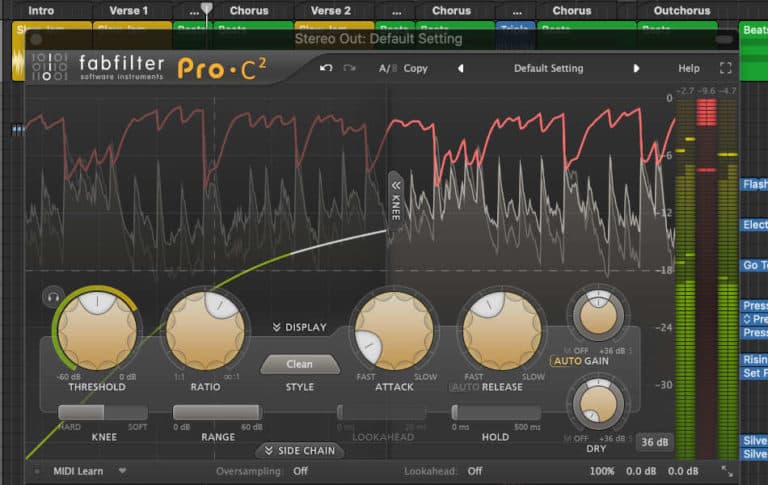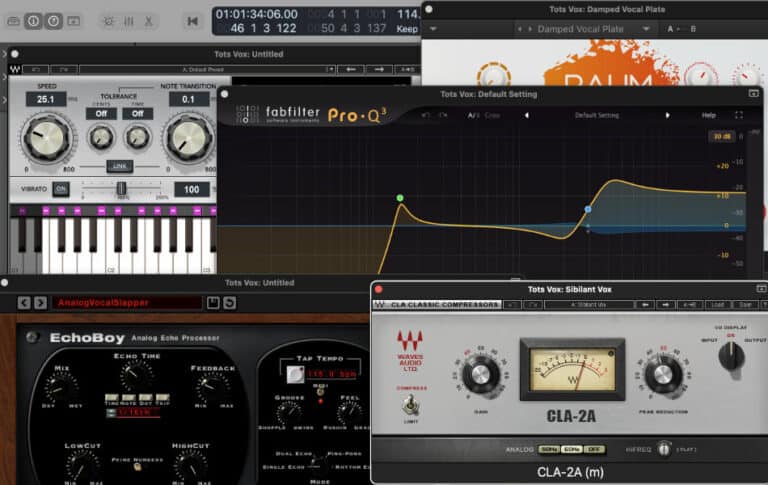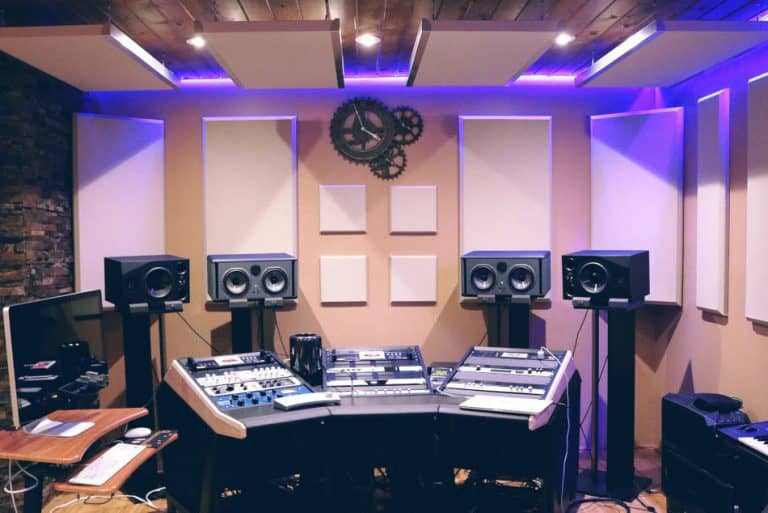Synthesizer Filters and How They Are Used in Music Production
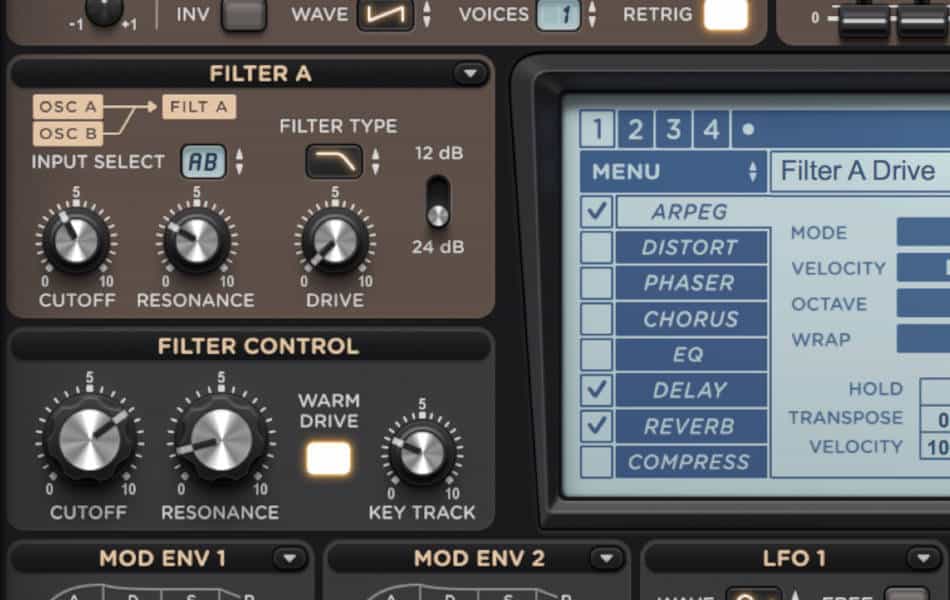
Whatever type of music you are producing in your studio you are likely to be using synthesizers. There are some amazing free software synthesizers available, so cost isn’t a barrier to using them.
You might also have, or be thinking about getting, a hardware synthesizer. These are even more fun to use than software synthesizers because you feel like you are actually interacting with the instrument rather than using a computer.
An aspect of the synthesizer that really interested me right from the start was the filter, and I wanted to write something here about what I have learned.
When I started to learn about synthesizers it seemed odd that you should spend time developing a sound that you liked using the sound generating oscillators, only to use a filter to make it sound dull and maybe less interesting.
This aspect of the synthesizer, using the filter, really interested me right from the start, and I wanted to write something here about what I have learned.
We’ll start with some general features of synthesizers to set the scene before moving on to look at filters specifically.
Analog vs Digital Synthesizers
We won’t worry too much about the relative merits of analog vs digital synthesizers here. The type of synthesizer filters we are focusing on can be produced by both digital or analog electronic circuits.
In addition, digital synthesizers can be hardware or software and in each case the digital processors are usually emulating analog hardware electronics.
Subtractive Analog Synthesis
As an introduction to the subject we will look at some basic aspects of analog subtractive synthesizers. The information is aimed at people who are getting started and trying to develop their knowledge of synthesizers and how filters could be used, so I have tried to keep it fairly basic.
As I mentioned above we’re not going to worry much about the differences between analog and digital synthesizers. Analog here also refers to digital synthesizers that are emulating the way analogy synthesizers work.
What Is a Subtractive Synthesizer?
The most popular and most traditional type of synthesizer uses subtractive synthesis. This is the type of synthesizer developed by Robert Moog in the 1960s.
In this design of synthesizer the sound is made by one or more oscillators. The sound from the oscillators is then passed through a filter before being output via an amplifier.
There is usually some sort of modifier that can be applied to the oscillators, the filter, and the amplifier to modify the sound.
Despite the importance of the oscillators and modulators it always seems to be the filters that people get very excited about. That’s what made me want to explore the topic here.
What Synthesizer Filters Do
A synthesizer filter is an electronic circuit that removes some frequencies from a sound. So, a sound must be made up of various different frequencies then?
When we hear a sound played by a synthesizer (or a guitar, or piano, or just about any instrument) we hear a particular pitch. The pitch might be F-sharp, A-flat or C for example.
What we perceive as the basic frequency, or pitch, is produced by a large, primary vibration called the fundamental. On top of this fundamental an infinite number of higher frequency vibrations are also happening.
These higher frequency vibrations are called overtones, and they are what produces the unique quality, or timbre (rhymes with camber) of the sound.
Different instruments playing notes at the same pitch will sound different because of these higher frequency overtones, even though the fundamental is the same in each case.
When you apply a filter to the sound produced by a synthesizer’s oscillator you are filtering out (by reducing the volume) of some of these overtones. Different types of filters reduce the volume of different frequencies of sound, which lets you shape the sound produced by the synthesizer.
Synthesizer filters were originally called voltage-controlled filters, or VCFs. The name is still used, even when the filters are no longer controlled by a voltage.
Filter Controls
Synthesizers with more than one type of filter have a control switch so that you can choose the type of filter you want to use, and we’re going to look these next. There are also two main filter controls, cutoff and resonance, that let you adjust these levels for the filter.
Cutoff Control
The cutoff control lets you choose the frequency where the filter will start reducing, or “cutting off” the volume of the various frequencies within the sound. As we’ll see, the filter can start cutting off from the highest frequencies, the lowest frequencies, or both.
Resonance Control
The resonance control lets you boost the level of the sound at the frequency where the cutoff control is set. This can be used to emphasise the cutoff frequency to make it more noticeable if you adjust, or sweep, the cutoff frequency while notes are playing.
If you turn up the resonance control far enough it can start to “self-oscillate” and produce its own sounds in addition those already coming from the synthesizer’s oscillators.
Filter Envelopes
The filter can usually be controlled by an “envelope”. This makes it a dynamic filter rather than a static one.
Synthesizers usually also have an envelope associated with the amplifier, and since this is easier to understand we’ll start with this as an illustration of the principle.
Amplifier Envelopes
Synthesizer envelopes are often called “ADSR” envelopes. “A” stands for attack, and in an amplifer envelope it lets you control how quickly the sound builds up to maximum volume when you press a key.
“D” stands for decay, and it lets you control how quickly the sound falls from a peak.
“S” stands for sustain, and this is the volume level the sound will fall to after the decay stage. If you set the sustain at the maximum level the sound will continue to play as long as you keep the key pressed.
“R” stands for release, which is the time it takes for the volume to fall away completely after the key has been released. Minimum release causes the sound to stop almost immediately, while maximum release values make the sound continue after the you take your finger off the key.
Filter Envelopes
Filter envelopes usually employ the same ADSR arrangement as amplifier envelopes.
The starting point for the filter envelope is usually the level that the filter cutoff control is set at. If you don’t use a filter envelope the static filter will do what you set it to do the whole time the notes are playing. When you apply a filter envelope the filter cutoff level is automatically adjusted by the envelope.
The attack control (A) lets you adjust how quickly the filter opens. With a lowpass filter this means the filter cutoff being turned up from the level it has been set at, usually up to the maximum level (or completely open) filter.
The decay control (D) lets you adjust the time it takes for the filter cutoff level to come back down.
The sustain control (S) sets the level at which the filter cutoff stays as long as the note is still being played (by pressing the key or by a MIDI signal).
The release control (R) lets you adjust how long it will take the filter cutoff to come down from the sustain (S) level to the level the cutoff is set at.
A filter envelope can be used to make the timbre of the sound change as then note is playing. The original idea was probably to enable synthesisers to emulate acoustic instruments. The timbre when an instrument is played is often brighter (with more overtones) in the beginning, becoming duller as the sound decays.
In addition to the ADSR envelope controls, your synthesizer may have a control to adjust how much of the sound is affected by the filter envelope (the rest only being affected by the original filter cutoff setting).
Inverted Envelopes
Some synthesizers enable you to invert the filter envelope. In this case the filter cutoff would start where it has been set, and the envelope would cause the filter to close to its minimum level before coming back up to the original according the settings for decay, sustain and release.
Low-Frequency Oscillator
The filter cutoff can also be controlled by the synthesizer’s low-frequency oscillator. This produces a wave at sub-sonic (too low to hear) frequencies that can be sent to the filter to turn the cutoff frequency up and down.
Some software synthesizers also let you connect the low-frequency oscillator to the filter resonance control so that this can be adjusted to produce a different effect.
Key Tracking
The filter cutoff frequency can also be controlled by the keyboard. This is called key tracking or key follow. When key tracking is activated the cutoff frequency will be altered slightly depending on the pitch of the key being played.
You can often adjust the amount of key tracking that is applied. The way that this affects the sound is different for each of the filter types, which we will look at next.
Filter Type
The types of filter most commonly found on synthesizers are the lowpass filter, highpass filter, bandpass filter, and notch filter. We will look at each of these filter types and some of the ways they can be used in music production.
Lowpass Filter
The lowpass filter is the type that’s most commonly used in subtractive synthesis. We will use this to illustrate some general principles of synthesizer filters since it’s easier to explain using specific examples. Then we will look at how the principles apply to other types of filter.
The original description of a Moog voltage-controlled low pass filter module says that it allows the lower portion of a signal’s harmonic spectrum to pass, while varying the upper harmonic cutoff point.
What this means is that the filter cuts out the higher frequency overtones and leaves the lower ones to pass through. The overall effect is to make the sound “darker” or “smoother”.
You can start by letting all of the overtone frequencies pass by turning the lowpass filter cutoff control all the way up. As you move the control knob or slider down you will remove progressively more of the overtones, starting with the higher frequencies and gradually moving down to the lowest.
The point of doing this was a mystery to me until I understood that you don’t usually want to leave the synthesizer sounding like this, but to vary the timbre of the sound by opening and closing the filters while the music is playing.
In electronic dance music, for example, a track can be quite long and very repetitive but it doesn’t get boring. This is often achieved by opening and closing the low pass filters on a synthesizer, which can provide a surprising amount of variety and emotional impact.
The filter doesn’t usually cut the sound off at a right-angle. The filter usually reduces the volume of the overtones gradually. In the case of a lowpass filter this would start with the higher frequencies, and they would be reduced the most.
The slope of the filter cutoff is usually described in decibels per octave (dB per octave). This refers to how much the volume of the overtones above the cutoff frequency are reduced, and it is sometimes called the transition slope.
A 6dB per octave filter would have a gradual effect on the overtones, while a 24dB per octave filter would have a much more marked effect on the sound. Common filter slopes on synthesizers are 6dB, 12dB and 24dB (per octave).
In traditional hardware synthesizers the basic filter unit was a 6dB per octave filter, so 12dB and 24dB per octave filters were made by combining two or four 6dB filters.
One-Pole, Two-Pole and Four-Pole Filters
Sometimes these filter slopes are describe using the word “pole”. A one-pole filter refers to 6dB per octave, two-pole filter to 12dB per octave, and a four-pole filter to 24dB octave.
“Pole” comes from the graphs produced by electronic engineers analysing the effects of the filters. The graph produced by a 6dB per octave (one-pole) filter looks like a sheet draped over a pole, a 12dB per octave (two-pole) filter produces a graph that looks like a sheet draped over two poles, and a 24dB per octave (four-pole) filter graph looks like a sheet draped over four poles.
18dB per octave filters are less common on synthesizers, but this would be called a three-pole filter and it would produce a graph that looks like a sheet draped over three poles.
Lowpass Filter Key Tracking
When notes are played on an acoustic instrument the higher pitches often sound brighter than the lower ones. This effect can be emulated on a synthesizer by using a lowpass filter with key tracking applied to it.
When lower notes are played the key tracking control will leave the filter cutoff level at around the level it is set at. As progressively higher notes are played the tracking control opens the lowpass filter a little further to allow more overtones to pass through. This makes the sound of the higher notes brighter than the lower notes.
Highpass Filter
As the name suggests, a highpass filter has the opposite effect to a lowpass filter. In this case the filter suppresses the frequencies below the cutoff level. The control knob or slider of a highpass filter works the opposite way round to a lowpass filter.
With a lowpass filter the when the control is turned right down (to the left for a knob, or the bottom for a slider) the filter is completely closed and no frequencies are allowed to pass. When it’s turned right up (knob to the right, slider to the top) the lowpass filter has no effect and all of the frequencies are allowed to pass.
When a highpass filter control is turned right down (to the left for a knob, or the bottom for a slider) the filter has no effect and all of the frequencies are allowed to pass through.
As you start the raise the cutoff control of the highpass filter it’s the lowest frequencies that are filtered out (the volume turned down). This means that the strong fundamental tone will be removed from the sound first, resulting in a bright but thin sound.
As the cutoff control is turned up the lower overtones are removed, followed by the higher overtones. This results in a progressively thinner sound as the cutoff level is raised.
A highpass filter can be used in similar way to EQ to remove lower frequencies from the sound of a synthesizer in the mix to prevent the overall sound of a track becoming muddy.
DJs often use a highpass filter when mixing one track with another, since removing the low frequencies helps to prevent the sounds of the two tracks clashing while they are both playing at the same time.
Bandpass Filter
A bandpass filter is like a lowpass filter overlapping with a highpass filter. The lowpass filter cuts out the higher frequencies and the highpass filter cuts out the lower frequencies, so that is left is the band of frequencies in the middle.
The cutoff control for this type of filter lets you select just the narrow range of frequencies that you want by filtering out all of the frequencies above and below.
Notch Filter
A notch filter is sometimes called a band-reject filter. It works in the opposite way to the bandpass filter by removing the frequencies in the middle, while leaving the frequencies above and below to pass through.
Again, you can think of this as a lowpass filter combined with a highpass filter. However, this time they don’t overlap but approach each other from opposite ends without overlapping.
The frequencies in the middle aren’t allowed to pass by either the lowpass nor the highpass filter, creating a “notch” in the middle of frequency range where those frequencies are filtered out.
The cutoff control for this type of filter lets you select the frequency in the middle of the “notch” or range of rejected frequencies. A low-frequency oscillator can be connected to the cutoff control for a notch filter to move the cutoff frequency up and down, which produces the type of sound that you get with a phaser effects pedal.
Synthesizer Filters in Music Production
Despite all the features that are available on modern synthesizers, people always seem to be most interested in the sounds that can be produced by the filter than almost anything else.
An understanding of the way the various types of filters work and the ways they can be manipulated by key tracking and low-frequency oscillators can really help when trying to get a sound that makes our productions stand out.
